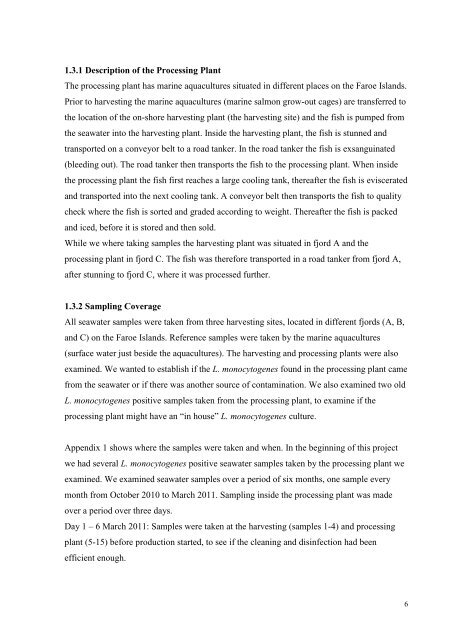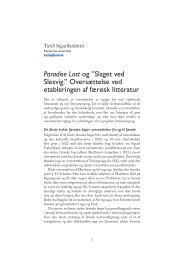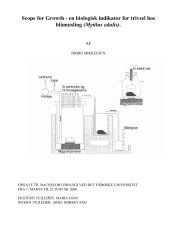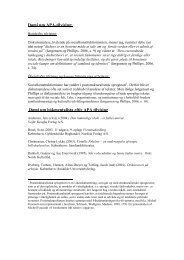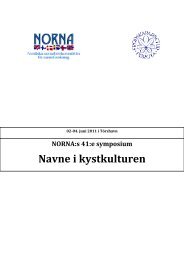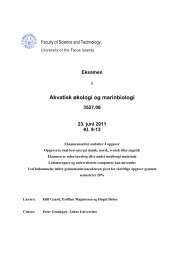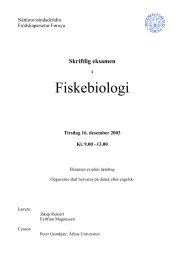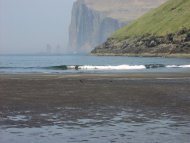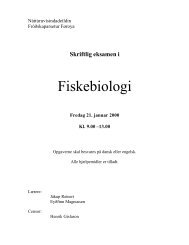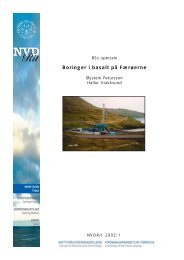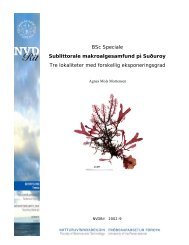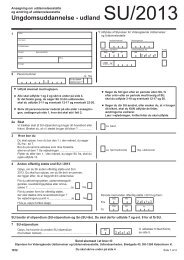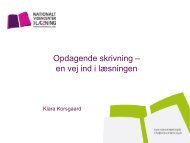Infectious Pancreatic Necrosis Virus (IPNV) - Fróðskaparsetur Føroya
Infectious Pancreatic Necrosis Virus (IPNV) - Fróðskaparsetur Føroya
Infectious Pancreatic Necrosis Virus (IPNV) - Fróðskaparsetur Føroya
You also want an ePaper? Increase the reach of your titles
YUMPU automatically turns print PDFs into web optimized ePapers that Google loves.
1.3.1 Description of the Processing Plant<br />
The processing plant has marine aquacultures situated in different places on the Faroe Islands.<br />
Prior to harvesting the marine aquacultures (marine salmon grow-out cages) are transferred to<br />
the location of the on-shore harvesting plant (the harvesting site) and the fish is pumped from<br />
the seawater into the harvesting plant. Inside the harvesting plant, the fish is stunned and<br />
transported on a conveyor belt to a road tanker. In the road tanker the fish is exsanguinated<br />
(bleeding out). The road tanker then transports the fish to the processing plant. When inside<br />
the processing plant the fish first reaches a large cooling tank, thereafter the fish is eviscerated<br />
and transported into the next cooling tank. A conveyor belt then transports the fish to quality<br />
check where the fish is sorted and graded according to weight. Thereafter the fish is packed<br />
and iced, before it is stored and then sold.<br />
While we where taking samples the harvesting plant was situated in fjord A and the<br />
processing plant in fjord C. The fish was therefore transported in a road tanker from fjord A,<br />
after stunning to fjord C, where it was processed further.<br />
1.3.2 Sampling Coverage<br />
All seawater samples were taken from three harvesting sites, located in different fjords (A, B,<br />
and C) on the Faroe Islands. Reference samples were taken by the marine aquacultures<br />
(surface water just beside the aquacultures). The harvesting and processing plants were also<br />
examined. We wanted to establish if the L. monocytogenes found in the processing plant came<br />
from the seawater or if there was another source of contamination. We also examined two old<br />
L. monocytogenes positive samples taken from the processing plant, to examine if the<br />
processing plant might have an “in house” L. monocytogenes culture.<br />
Appendix 1 shows where the samples were taken and when. In the beginning of this project<br />
we had several L. monocytogenes positive seawater samples taken by the processing plant we<br />
examined. We examined seawater samples over a period of six months, one sample every<br />
month from October 2010 to March 2011. Sampling inside the processing plant was made<br />
over a period over three days.<br />
Day 1 – 6 March 2011: Samples were taken at the harvesting (samples 1-4) and processing<br />
plant (5-15) before production started, to see if the cleaning and disinfection had been<br />
efficient enough.<br />
6


